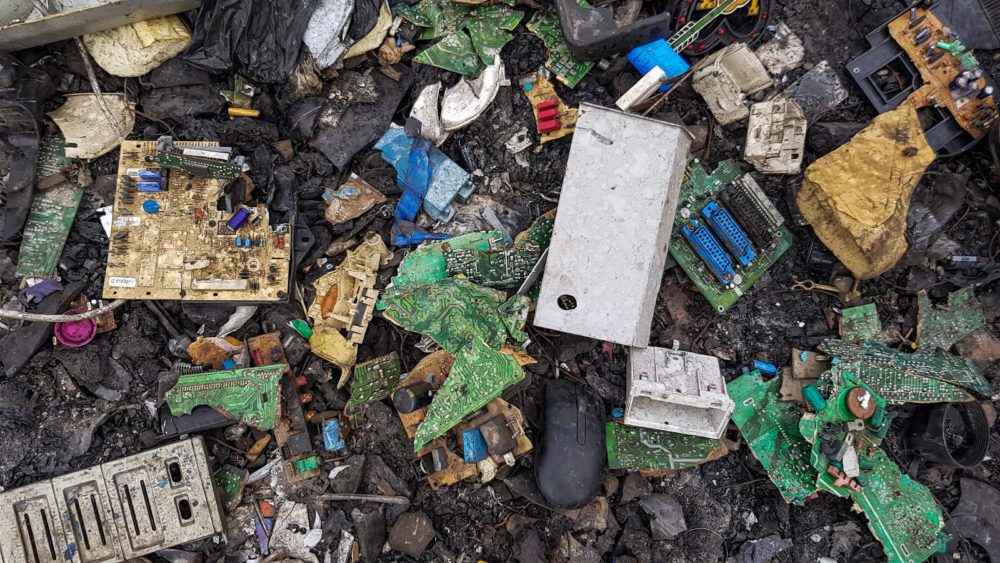It used to be noted that the world generates far too much trash that needs to be disposed of. But these days, a major concern has been something more specific: e-waste. Here are top solutions to E-waste problems.
It’s a numbers game, but a massive one; by 2016, the world started generating about 44.7 million tons of e-waste each year. It’s been estimated that this is the equivalent of sending 125,000 jumbo jets to the trash heap each year.
The Cycle Of Old Electronics
The problem, of course, is one we all recognize: technology. As technology becomes more advanced, the life span of our devices just keeps getting shorter. Far too many products simply get thrown out once a newer and more sophisticated version comes out, or once their batteries die, to be replaced with new devices. Manufacturers, it’s known, intentionally build devices to eventually become obsolete.
The fast-growing number of unwanted devices means the amount of e-waste being sent to landfills is skyrocketing — and with it comes an environmental ticking time bomb in the form of toxic chemicals inside those devices that can contaminate our soil, water, and air.
E-Waste Solutions
The good news is that there are efficient and successful ways to solve the growing environmental problems that e-waste poses. And one of the most proven solutions is through recycling.
The challenge is often in getting that message out to a wider number of people worldwide. If they can make it part of their weekly routine to recycle plastics, cans, and newspapers, why not a used smartphone or laptop as well?
What Are the Top Environmental Problems with e-waste?
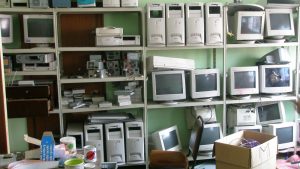
In our digital age, it seems fewer and fewer consumers can survive without their electronics, from their smartphone to our laptops and even the increasing amount of “smart homes” technology we’re investing in. As a result, our environment could really use a break from old devices. The Environmental Protection Agency estimates that nearly 250 million computers will become obsolete in the next five years.
E-waste contains a wide list of toxins, including mercury, cadmium, hexavalent chromium, and fire retardant. Cathode ray tubes in computer monitors contain high concentrations of lead.
But in the U.S., most states leave it up to individual consumers to decide what they want to do with their discarded equipment, and most people are simply throwing them out, which is polluting our waterways, soil and air.
How Can We Prevent It?
Not enough consumers understand that environmental risk, but many of them also don’t seem to recognize something else: used electronics have a lot of inherent value that we don’t realize. The vast majority of electronics can be recycled, and the items within them that can be recovered include plastic, steel, aluminum, copper, gold, silver, and other precious metals.
Those metals can be given a second life, and that’s why recycling is such an ideal solution to this problem. An experienced recycling firm like Great Lakes Electronics Corporation can take those devices apart, so the individual parts can be used in new products.
Learning From The Past: Urban Mining
In 2016, the estimated value of recoverable materials in global e-waste was $64.6 billion. Unfortunately, just 20 percent got properly recycled. The issue of recoverable material is as important as the environmental challenges that e-waste poses. As the number of consumers buying electronic equipment soars into the millions, manufacturers are facing shortages of the raw materials needed to make their products.
One of the e-waste solutions has been identified as “urban mining” — reclaiming and reusing the materials from discarded e-waste products.
So what are some of the top solutions to our e-waste challenge?
Top Solutions to the E-waste Problem
Nobody expects the amount of e-waste we generate to suddenly drop — in part because prices of new electronics are dropping, making them in much higher demand around the world, courtesy of a growing middle class in developing nations that’s going digital. After all, around the world half of all households have internet access, and more than 7.7 billion people have cell phones.
How can we stop the e-waste problem? The first is to keep all used electronic devices out of our trash and our landfills. The same is true for simply hoarding those devices in our closets or desk drawers, where the valuable properties within them sit unused. And there are proven solutions for reducing e-waste.
1. Recycling
More consumers need to get into the habit of taking their used electronics to an experienced recycling firm that can disassemble them, separating and categorizing the contents by material and cleaning them, then shredding them mechanically for further sorting with advanced separation technologies.
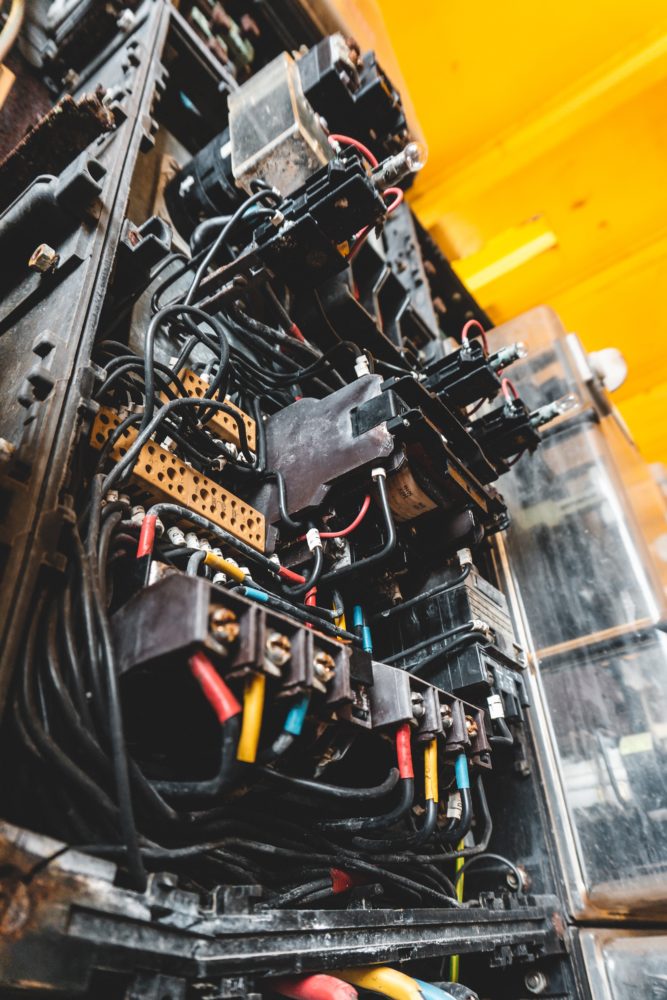
An experienced recycling firm like Great Lakes Electronics Corporation will meet the highest standards for how they recycle our e-waste and ensure that nothing of value within any device gets wasted. By doing so, they’re also able to meet the high demand for recycling metals from used electronics, which are then used to make new products.
2. Education
The second most important solution is to educate people about how important recycling is for e-waste. It can begin with setting an example, making a commitment on your own to take any electronic device you have that’s no longer wanted or being used, and bring it to a recycling firm rather than throw it out with your regular trash or toss it in a desk drawer.
But then it’s also important to be vocal about that with others: to note that out of concern for our environment, you adopted the practice of recycling each device.
Writing about the environmental benefits of recycling e-waste on social media sites is also a good place to start spreading the word.
3. Teach
It’s important to spread that message to your family, friends, neighbors, and coworkers, but it’s also important to get the message to our future leaders — our children.
You could start by asking your teacher if you could work on a project to have all the kids at school bring in the old cell phones their parents no longer want, and teach the students how to collect the devices and get them to a recycling firm.
And it isn’t just schools that have a role to play here. Non-profit organizations, municipal governments and businesses in the private sector can also get involved in hosting community events that promote recycling and educating people about our e-waste challenge.
4. Keep Learning
Just as the technology that creates smartphones and other devices keeps changing, the same is true when it comes to e-waste. In the U.S., 25 states now have laws that aim to either prevent used electronics from being sent to landfills, or that promote recycling. The European Union has established new goals for increasing e-waste recycling rates. The United Nations has launched the Step-Initiative to introduce a comprehensive approach to handling E-Waste, while also preparing professionals to work in the field of E-Waste management.
The bottom line is a lot of actions are now being taken to provide practical solutions to e-waste problems — solutions that address environmental and health concerns, while at the same time emphasizing other issues.
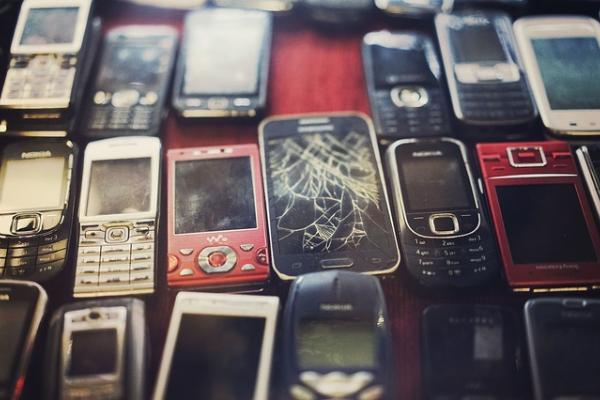
Did you know that recycling e-waste helps preserve our natural resources? Did you know recycling e-waste eliminates the problem that data security poses when e-waste gets thrown away, since recycling firms can eliminate your old data from your unwanted devices?
Recycling also promotes a circular economy by making recycled metals available for new productions, which helps boost sustainability. The industry also creates jobs and provides tax revenue to our cities and states.
The more you keep educating yourself about e-waste recycling and solutions to e-waste problems, the easier it’s going to be to justify recycling these devices and helping other people understand why it’s so important.
E-Waste Solutions
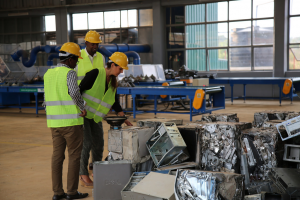
The global consumption of smartphones, computers and other electronic devices is on the rise, posing a clear danger to human health every time used electronics end up in landfills.
The solution to e-waste, though, is very simple: arrange to take your e-waste to a recycling firm like Great Lakes Electronics Corporation. The benefits of doing so are enormous.
Recycling remains the most effective way to keep e-waste from damaging our environment and our health. That’s a message we all need to keep repeating.
Great Lakes Electronics Corporation has a great reputation for being trusted experts in the recycling and management of waste electronics and other metals. The unwanted equipment brought to their experienced team is recycled in a responsible, environmentally conscious way, by this family-owned and operated business that prides itself as being environmental stewards.
Great Lakes Electronics Corporation serves customers both large and small, from private customers to large corporations. Contact them today at 888-392-7831 or click here to request a quote.

